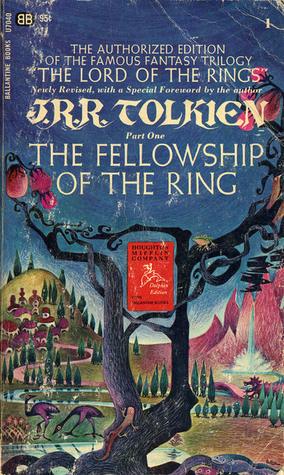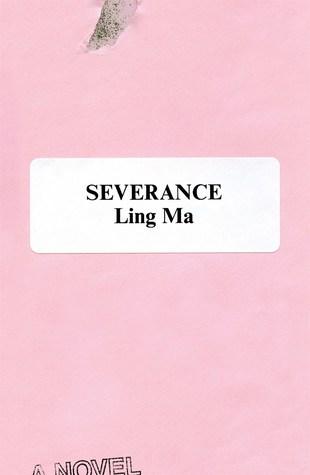The Scarlet Letter by Nathaniel Hawthorne Book Summary
Discover a comprehensive summary and key insights of Nathaniel Hawthorne's "The Scarlet Letter." Explore the themes, characters, and critical reviews of this classic novel that delves into sin, guilt, and redemption. Perfect for students and literature enthusiasts alike!
The Scarlet Letter Book Summary
Nathaniel Hawthorne's The Scarlet Letter stands as one of America's most powerful explorations of sin, redemption, and social judgment in Puritan New England. This timeless masterpiece follows Hester Prynne, who bears the scarlet letter "A" as punishment for adultery, while examining the psychological torment of hidden guilt and public shame. Through its rich symbolism and complex characters, the novel reveals profound truths about human nature, moral hypocrisy, and the possibility of spiritual transformation. Hawthorne's haunting tale continues to resonate with readers, offering insights into the eternal struggle between individual conscience and societal expectations that remain strikingly relevant today.
Enhance your reading experience by exploring The Crucible Book Summary, Review & Key Insights for a comprehensive understanding of themes, characters, and critical analysis. Dive deeper and connect ideas seamlessly.
The Scarlet Letter by Nathaniel Hawthorne - Introduction
I had no idea that The Scarlet Letter would make me rethink how we judge people and carry shame. When I first picked it up, it was just because it’s a classic that everyone talks about in school—Classics, Fiction, Historical Fiction, you know the type. I expected a dry story about Puritan times, but what surprised me was how deeply personal and human it felt. Nathaniel Hawthorne doesn’t just tell a story about sin and punishment; he dives into the messy emotions behind it all—the guilt, the resilience, and even the quiet rebellion.
If you’re someone who’s ever felt misunderstood or judged, this book will hit home. It’s only 279 pages, so you can get through it in a few sittings, but it really sticks with you long after. Plus, if you’re reading it for school or just want to get into American Classic Literature without feeling overwhelmed, this is a solid pick. It’s historical but not boring, and it feels surprisingly relevant today.
So, if you want to explore themes like identity, morality, and how society shapes us (all wrapped up in a gripping story), I think you’ll really appreciate it. Honestly, it made me look at how we carry our own “scarlet letters” in life—and maybe how we could be a little more compassionate about others’ stories too.
What is The Scarlet Letter About?

The Scarlet Letter by Nathaniel Hawthorne is about Hester Prynne, a woman shunned by her Puritan community after bearing an illegitimate child, who grapples with the consequences of sin and societal judgment. The book's main message emphasizes the complexities of sin, guilt, and redemption, illustrating how societal norms can distort personal identity and morality. Key concepts include the nature of sin and its impact on individuals, the struggle for personal integrity against societal expectations, and the theme of isolation versus community, highlighting the profound effects of shame and forgiveness.
About Book Author - Nathaniel Hawthorne
Tonight, we have someone truly special with us. Nathaniel Hawthorne didn't start out intending to dissect the human heart with such precision. What's interesting about Nathaniel Hawthorne is how his own lineage, deeply rooted in Puritan New England and the shadow of the Salem trials, profoundly shaped his perspective. This wasn't just history for him; it was a personal inheritance, a moral weight that fueled his exploration of sin and secrecy, leading directly to The Scarlet Letter.
Many don't know he actually added the 'w' to his surname, distancing himself from ancestors involved in those very trials. This intimate struggle with the past, this deep dive into the complexities of guilt, is what allowed him to craft not only this iconic novel but also other piercing works like The House of the Seven Gables. He possesses an almost uncanny ability to see into the hidden corners of the soul, making him uniquely positioned to explore the societal pressures and personal torments at the heart of his stories. It's this profound, personal connection to the themes of judgment and redemption that makes his voice so compelling.
More Books To Find
The Scarlet Letter - Book Overview
The Scarlet Letter is essentially about sin, guilt, and redemption in a Puritan society. It follows Hester Prynne, a woman who has a child out of wedlock and is publicly shamed by wearing a scarlet "A" on her chest. The main idea revolves around how society punishes individuals for their mistakes and how that punishment affects their lives.
Nathaniel Hawthorne wrote it not just to critique Puritanism but to explore the complexities of human emotions and the idea that everyone carries their own burdens, often hidden beneath the surface. He wanted to show that we all have our secrets and that judgment can be both cruel and hypocritical.
What sets this book apart from others on similar themes is its deep psychological insight. While many stories focus on the act of sin itself, Hawthorne dives into the inner turmoil of his characters, especially the conflicted minister, Dimmesdale, who grapples with his own guilt.
One specific moment that really stuck with me is when Hester stands on the scaffold, holding her baby, and faces the crowd. It’s a powerful scene that encapsulates her strength and vulnerability, making you feel the weight of societal judgment and personal shame. It’s haunting and beautifully written, leaving a lasting impression about the nature of sin and the human experience.
Key Insights of The Scarlet Letter
The Scarlet Letter explores the themes of guilt and redemption through the character of Hester Prynne, who bears the burden of her sin in the form of a scarlet letter 'A'. This letter serves as a constant reminder of her adultery, shaping her identity and societal perception.
Society's Judgment is a crucial insight, as Hawthorne critiques the rigid moral standards of Puritan society. Hester's punishment is not just a personal consequence but a reflection of the community's need for public shaming and control, highlighting the tension between individual desires and societal expectations.
The character of Dimmesdale represents the struggle with internal guilt. His inability to confess leads to physical and psychological deterioration, emphasizing the destructive power of concealed sin. In contrast, Chillingworth, Hester's estranged husband, embodies revenge and obsession, showcasing the corrupting influence of vengeance on the human soul.
Another significant point is the concept of identity. Hester evolves throughout the novel, transforming from a shunned figure into a symbol of strength and resilience. Her journey underscores the idea that one's identity is not solely defined by societal labels but can be reclaimed through personal growth and defiance.
Ultimately, Hawthorne's work serves as a profound commentary on the complexities of human emotion, morality, and the quest for forgiveness, inviting readers to reflect on their own values and the nature of sin.
Who Should Read This Book
"The Scarlet Letter" by Nathaniel Hawthorne is essential reading for those interested in classic literature, American history, and moral complexity. It appeals to readers who appreciate deep psychological exploration and the themes of sin, guilt, and redemption. Students of literature and psychology will find Hawthorne’s rich symbolism and character development captivating. Additionally, individuals intrigued by societal norms and the consequences of public shaming will resonate with the novel’s exploration of Puritanical values. Ultimately, this book is for anyone seeking a profound understanding of human nature and the struggles between individuality and societal expectations.
Read If You Are
- Interested in exploring themes of sin, guilt, and redemption in literature
- A fan of classic American literature and its historical context
- Seeking to understand the complexities of societal judgment and personal identity
Skip If You Are
- looking for a fast-paced, action-driven story
- uncomfortable with themes of sin, guilt, and societal judgment
- seeking a straightforward narrative without complex symbolism and language
Important Takeaways from this Book
-
Reflect on Your Values: Take 10 minutes today to write down your core values. Understanding what truly matters to you can guide your decisions and actions, leading to greater personal fulfillment. Consider what principles you admire in others and how they align with your own life.
-
Embrace Vulnerability: Share a personal story or struggle with a trusted friend or family member. This action fosters deeper connections and encourages openness, creating a supportive environment. Remember, vulnerability can strengthen relationships and build trust.
-
Practice Forgiveness: Identify someone you need to forgive, whether it’s yourself or another person. Write a letter expressing your feelings, even if you don’t send it. This practice can free you from emotional burdens, promoting mental well-being and emotional resilience.
-
Engage in Community Service: Find a local charity or community group and volunteer your time this week. Helping others not only benefits those in need but also enhances your sense of purpose and belonging. Research organizations that resonate with your values to ensure a meaningful experience.
-
Set Boundaries: Identify one area in your life where you feel overwhelmed and establish a clear boundary today. Communicate this boundary to others if necessary. Setting limits helps protect your mental health and allows you to focus on what truly matters, leading to a more balanced life.
Book Review
I picked up "The Scarlet Letter" expecting a straightforward tale of sin and redemption, but what I got was a deeply layered exploration of guilt, societal judgment, and personal identity. Hawthorne's writing style is beautifully intricate, often weaving in rich symbolism that keeps you pondering long after you’ve closed the book. For instance, the scarlet letter itself becomes a powerful symbol of shame and resilience, and I found myself captivated by how it evolved throughout the story.
One of the strengths of the book is its character development. Hester Prynne is a remarkably complex character, and her journey from shame to strength is both inspiring and relatable. I appreciated how Hawthorne delves into her inner turmoil, making her struggles feel profoundly human. However, I did find the pacing a bit uneven at times. Some sections felt overly descriptive, which slowed the narrative down and made it challenging to stay engaged. A tighter edit could have made the story flow more smoothly.
In comparison to other classics like "The Crucible" or "Wuthering Heights," "The Scarlet Letter" offers a more introspective look at morality and societal norms, but it lacks the same level of dramatic tension found in those works.
Overall, I would recommend "The Scarlet Letter" to readers who enjoy literary classics and are willing to engage with its themes on a deeper level. However, if you prefer fast-paced plots or more action-driven narratives, this might not be the book for you. It’s a thought-provoking read that rewards patience and reflection.
Final Thoughts
If I'm being honest, finishing The Scarlet Letter left me with a mix of admiration and contemplation. Hawthorne's exploration of guilt and redemption is both profound and haunting. I'd definitely recommend this if you're into classic literature that dives deep into the human psyche, especially if you appreciate themes of societal judgment and personal struggle. However, skip this one if you're looking for a fast-paced plot or a happy ending—it's more of a reflective journey than a page-turner.
The thing that surprised me most was how relevant the themes still feel today, especially in our social media-driven world where public scrutiny can feel just as intense. One element that will stick with me months from now is Hester Prynne's resilience and how she carves out her own identity despite societal condemnation.
As for rereading, I’d probably opt for the summary next time. While the full book has its beauty, the dense prose can be a bit much. Overall, my reading experience was enriching, and I found myself pondering the moral complexities long after I closed the book. It’s one of those reads that stays with you, making you reflect on your own values and choices.
Frequently Asked Questions
How long does it take to read The Scarlet Letter?
The Scarlet Letter, with 279 pages, typically takes about 6 to 8 hours to read, depending on your reading speed and comprehension. This estimate allows for a thoughtful engagement with the text, considering its themes and language.
What makes "The Scarlet Letter" different from other books in this genre?
The Scarlet Letter stands out through its deep exploration of sin, guilt, and redemption, combined with rich symbolism and psychological complexity. Hawthorne's unique narrative style and focus on moral dilemmas provide a profound commentary on societal norms, making it a timeless classic in American literature.
Who is the target audience for The Scarlet Letter
The target audience for "The Scarlet Letter" includes literary scholars, students of American literature, and readers interested in themes of sin, guilt, and societal norms. Its rich symbolism and historical context also appeal to those exploring moral complexities and Puritan society.
Are there any criticisms or limitations of The Scarlet Letter
Critics often point to the book's heavy symbolism and moral complexity as potential barriers to understanding. Some argue that its portrayal of women is limited and reflects the societal norms of the 19th century, which may not resonate with contemporary readers seeking more progressive narratives.
What is the main theme of The Scarlet Letter by Nathaniel Hawthorne
The main theme of "The Scarlet Letter" is the conflict between individual identity and societal norms. It explores sin, guilt, and redemption, highlighting the struggle of the protagonist, Hester Prynne, as she navigates the harsh judgment of a Puritan society while seeking personal freedom and self-acceptance.
Tags:
Nathaniel Hawthorne, The Scarlet Letter, The Scarlet Letter Book, The Scarlet Letter Book Rating, The Scarlet Letter Book Review, The Scarlet Letter Book Summary, The Scarlet Letter By Nathaniel Hawthorne, The Scarlet Letter Description, The Scarlet Letter Short Summary

Michel Fisher
Michel Fisher is a passionate fiction enthusiast and book blogger who writes about emotional reads, character-driven stories, and contemporary romance authors that captivate hearts and minds.

The Scarlet Letter
Book Overview
Description
Nathaniel Hawthorne's THE SCARLET LETTER reaches to our nation's historical and moral roots for the material of great tragedy. Set in an early New England colony, the novel shows the terrible impact a single, passionate act has on the lives of three members of the community: the defiant Hester Prynne; the fiery, tortured Reverend Dimmesdale; and the obsessed, vengeful Chillingworth.With THE SCARLET LETTER, Hawthorne became the first American novelist to forge from our Puritan heritage a universal classic, a masterful exploration of humanity's unending struggle with sin, guilt and pride.
Key Points
Guilt shapes identity and society
Characters
Hester Prynne, Arthur Dimmesdale, Roger Chillingworth, Pearl Prynne
Publisher
Penguin Books
First Publish Date
03/16/50





